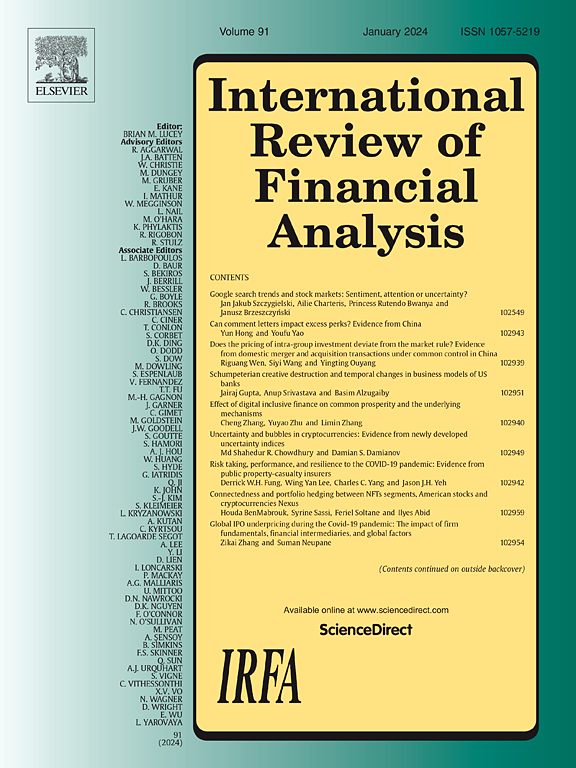Can the integration of digital and real economies stimulate residents' consumption?
IF 7.5
1区 经济学
Q1 BUSINESS, FINANCE
引用次数: 0
Abstract
Integration of digital and real economies creates high-quality supply, facilitates the expansion of domestic demand, and is an effective tool for stimulating economic vitality. Based on China's 2011–2022 panel data, this study utilized a coupled coordination model to assess the integration between the digital and real economies, and empirically investigated the impact of this integration on residents' consumption. Findings showed that integration outperforms stand-alone digital economy development, with industry and regional variations. Benchmark tests revealed that this integration significantly increases consumption by improving supply quality, stimulating demand. From a heterogeneity standpoint, the integration of digital and real economies has a more pronounced effect on residents' consumption in central regions and rural areas, effectively playing a role akin to “sending charcoal in snow.” And the digital-real economy integration in regions with high-technology market development levels and low housing prices has a greater impact on residents' consumption. Further analysis demonstrated that integration drives consumption through three channels: increased product diversity, higher income levels, and improved payment convenience. Moreover, it positively impacts consumption oriented toward survival, development, and enjoyment, facilitating the upgrade of consumption structures and the transformation of consumption patterns. The analysis also revealed that integration with the tertiary sector exerts a significantly stronger influence on consumption compared to integration with the primary and secondary sectors. These findings underscore the critical role of digital-real economy integration in reshaping consumption patterns.
数字经济与实体经济的融合能否刺激居民消费?
数字经济与实体经济融合,创造高质量供给,有利于扩大内需,是激发经济活力的有效工具。本研究基于中国2011-2022年面板数据,运用耦合协调模型对数字经济与实体经济的融合进行评估,并实证考察了数字经济与实体经济的融合对居民消费的影响。研究结果表明,整合优于独立的数字经济发展,存在行业和地区差异。基准测试显示,这种整合通过提高供应质量、刺激需求,显著增加了消费。从异质性角度看,数字经济与实体经济的融合对中部地区和农村地区居民消费的影响更为明显,实际上起到了“雪中送炭”的作用。在高技术市场发展水平和低房价的地区,数字与实体经济的融合对居民消费的影响更大。进一步分析表明,整合通过三个渠道推动消费:增加产品多样性、提高收入水平和提高支付便利性。积极影响以生存、发展、享受为导向的消费,促进消费结构升级和消费方式转变。分析还显示,与第一和第二产业的融合相比,与第三产业的融合对消费的影响要大得多。这些发现强调了数字与实体经济融合在重塑消费模式方面的关键作用。
本文章由计算机程序翻译,如有差异,请以英文原文为准。
求助全文
约1分钟内获得全文
求助全文
来源期刊

International Review of Financial Analysis
BUSINESS, FINANCE-
CiteScore
10.30
自引率
9.80%
发文量
366
期刊介绍:
The International Review of Financial Analysis (IRFA) is an impartial refereed journal designed to serve as a platform for high-quality financial research. It welcomes a diverse range of financial research topics and maintains an unbiased selection process. While not limited to U.S.-centric subjects, IRFA, as its title suggests, is open to valuable research contributions from around the world.
 求助内容:
求助内容: 应助结果提醒方式:
应助结果提醒方式:


